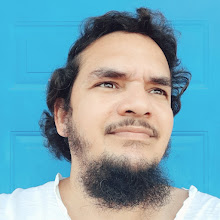This is a chapter from my seventh book called Bookeh - Through the lens of a Trinidadian photog
This photo was almost straight out of camera (sooc). I only did a crop and added a border in Snapseed. You will probably come across the term sooc in photography circles. This is where a photograph is presented exactly as it was captured, without any post-processing edits. It's often used to showcase a photographer's ability to achieve a desired look directly from the camera, but it's important to note that even JPEG images undergo some in-camera processing before leaving the camera. I think that there is a place for sooc and a place for post processing and it is a matter of your preference and goals.
Light travels in waves. My friend Gemini helped me understand how light waves are used to create a photograph. Similar to how the human eye works. Light, composed of oscillating electromagnetic waves, enters a camera lens and is focused onto a sensor. This sensor is divided into millions of tiny light-sensitive pixels. Each pixel acts like a miniature wave detector, measuring the intensity and color of light waves hitting it. This information is converted into electrical signals, then digitized, creating a digital representation of the original light wave pattern - the photograph.
The word wave starts with w which is in itself a wave. The letter w is a wave. If I trace the fingers of an open hand, that forms a wavy pattern. When did humans start hand waving? While some believe it evolved from military salutes or handkerchief waving, the true history remains unclear. It's likely a gesture that developed gradually as a form of nonverbal communication, its origins lost to time. Speaking of time, time is an essential component of any wave. It's the dimension in which a wave propagates. Without the progression of time, there can be no oscillation or movement, and thus, no wave. This photo gives us a moment in time and blurring gives the illusion of motion.
What got me started with this photo was that I was reading up on experimental photography and the different techniques. My friend Gemini explains it perfectly. Experimental photography is a playground for creativity, breaking free from traditional rules. Techniques like intentional motion blur, light painting, double exposure, and collage transform ordinary images into extraordinary art. It's a fusion of technical manipulation and artistic vision, where the only limit is imagination.
The photo was made when I was laying down. The background is the corner of the room. The room is naturally lit from a window where the curtain is tied up. I went into pro mode and experimented with all the settings I could find - white balance, speed, iso and manual focus. The wall of the room is actually pink. The resulting photo is kind of trippy and dizzying to look at. Life comes at us in waves. It is good to try new and different things. Instead of being bounced around by the waves, we can become the wave. Becoming the wave means actively shaping our lives and adapting to changes, rather than just reacting to what happens around us. Instead of a slave to our circumstances, we become a wave of freedom.


Comments